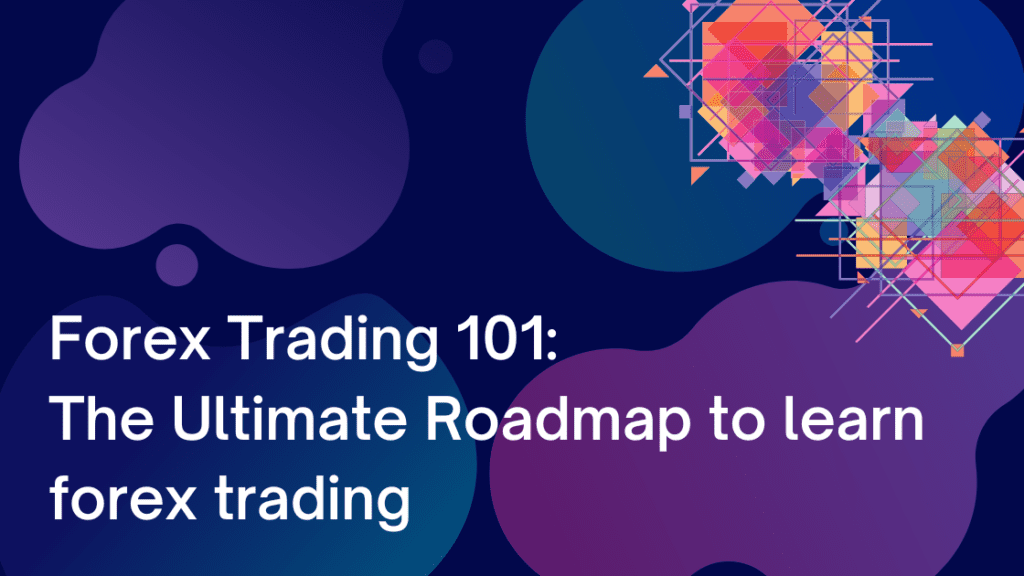Forex trading is also known as foreign exchange trading. It is the largest financial market globally, with a daily trading volume of over $3 trillion. If you’re new to forex trading and eager to master it, you’re in the right place. We will provide you with a roadmap to learn forex trading. This will help kickstart your journey towards becoming a consistently profitable trader. By following these steps and building a solid foundation, you’ll be on your way to mastering forex trading. Let’s now delve into the essential steps to guide you in mastering forex trading.
Understand the Basics to Master Forex Trading
Understanding the basics of forex trading is crucial. Start by getting familiar with currency pairs, exchange rates, and market dynamics. By grasping these fundamental elements, you’ll navigate the forex market more effectively.
Choose a Reliable Forex Broker
Choosing the right forex broker is essential. Find reputable and regulated brokers with user-friendly platforms. Use demo accounts to practice trading with virtual funds and get comfortable with the trading interface.
Research different brokers and compare their offerings, such as leverage, spreads, and trading tools. Check for regulatory compliance, customer reviews, and the quality of customer support. A reliable broker will provide you with a secure and efficient trading environment.
Master Forex Trading Terminology
To communicate effectively in the forex market, it’s essential to understand common forex trading terminology. Get acquainted with terms like pips, lots, leverage, and margin. This knowledge will enable you to read charts, analyze market trends, and execute trades with confidence.
A pip is the smallest unit of measurement in forex trading, representing the change in the value of a currency pair. Lots refer to the size of a trade. Leverage allows you to control a larger position with a smaller amount of capital. Margin is the collateral required to open and maintain positions.
Learn Fundamental and Technical Analysis
To make informed trading decisions, it’s important to grasp both fundamental and technical analysis. Firstly, fundamental analysis involves analyzing economic indicators, geopolitical events, and news that impact currency values. In addition, technical analysis focuses on price charts, patterns, and indicators to predict future market movements. By exploring both approaches, you can gain a comprehensive understanding of market analysis, which will enable you to make well-informed decisions based on a holistic view of the market.
Furthermore, fundamental analysis provides insight into the underlying factors that drive currency movements. Additionally, technical analysis offers valuable tools for identifying trends, such as support and resistance levels, and potential entry and exit points. Moreover, by combining these two approaches, you can enhance your decision-making process and validate trade opportunities.
In addition to that, understanding fundamental analysis helps you assess the economic health of countries and their potential impact on currency values. Similarly, technical analysis allows you to identify patterns and signals that can confirm or challenge your fundamental analysis findings.
Moreover, integrating both fundamental and technical analysis fosters a comprehensive and well-rounded approach to market analysis. Additionally, it enables you to consider multiple factors and perspectives when evaluating potential trades. Furthermore, by incorporating a combination of these approaches, you can reduce the risk of relying solely on one method.
Holistic approach to trading
Consequently, a holistic approach to market analysis, considering both fundamental and technical aspects, equips you with a broader understanding of the forex market. Ultimately, it enables you to make well-informed trading decisions and adapt to the dynamic nature of currency movements.
For fundamental analysis, keep track of economic calendars, central bank announcements, and news releases that can affect currency markets.
In technical analysis, learn how to read price charts and identify patterns. Such as support and resistance levels, trend lines, and chart indicators like moving averages and oscillators. Practice analyzing historical price data to identify trends and patterns that can inform your trading decisions.
Develop a Trading Strategy
A well-defined trading strategy is crucial for success when looking to learn forex trading. Additionally, sticking to your trading plan is the way to go. Firstly, create a plan that incorporates specific entry and exit points. It should have clear risk management techniques and profit targets. Lastly, don’t forget to backtest your strategy using historical data. This allows you to assess its effectiveness and make any necessary adjustments for optimal performance.
When developing a trading strategy, it’s important to consider factors such as your risk tolerance, time availability, and preferred trading style. Moreover, determine the currency pairs you’ll focus on, the indicators or patterns you’ll use for trade signals, and how you’ll manage risk and protect your capital. By doing so, your trading strategy will provide a clear framework for your decision-making process. Consequently, it will help you stay disciplined in the face of market fluctuations.
Practice with a Demo Account to Master Forex Trading
Put your knowledge into practice by utilizing a demo account. Most reputable brokers offer this feature, allowing you to trade using virtual money without risking your own capital. Practice executing trades, testing different strategies, and analyzing market conditions. This hands-on experience will enhance your skills and boost your confidence.
Use the demo account to familiarize yourself with the trading platform, practice placing trades, and execute your trading strategy in a simulated environment. Treat the demo account as if it were real money, and track your performance to assess the effectiveness of your strategy. This is the best way to master forex trading.
Keep a Trading Journal
Maintaining a trading journal is crucial to record your trades, observations, and emotions. By regularly reviewing your journal, you can identify patterns, strengths, and areas for improvement. Additionally, it helps you stay disciplined and make data-driven decisions based on past experiences, contributing to mastering forex trading.
In your trading journal, document the details of each trade, including entry and exit points, as well as the reasoning behind the trade and its outcome. Analyzing both winning and losing trades allows you to identify patterns and areas for improvement. Moreover, recording your emotions and mindset during each trade helps you understand how they may impact your decision-making.
Embarking on a journey to learn forex trading requires dedication, patience, and a thirst for knowledge. By following this ultimate learning roadmap, you’ll gradually gain a strong foundation in forex trading. Furthermore, it will empower you to navigate the markets with confidence. It’s essential to remember that forex trading is an ongoing learning process. Stay open to new ideas, adapt to market conditions, and continually expand your knowledge. So, start your journey today and master forex trading with determination and enthusiasm.
Happy learning and successful trading!
Check out our 1-1 Trading Masterclass.


